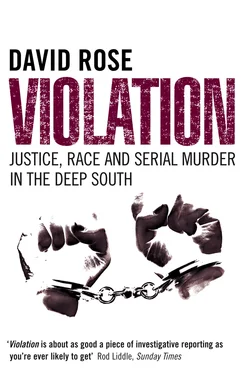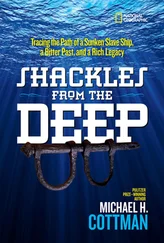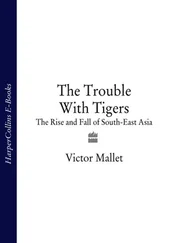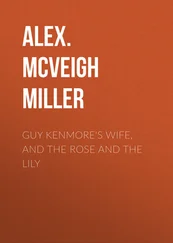Across the South, writes the Klan’s historian Wyn Craig Wade, The Birth of a Nation was greeted as a ‘sacred epic’, while the film ‘united white Americans in a vast national drama, convincing them of a past that had never been’. No moving picture had ever achieved a fraction of its audience and impact before. Against this backdrop, Columbus’s parochial, local version of the Reconstruction story is not particularly original, and is somewhat less vivid. But for future race relations in the city, it lacks neither relevance nor power. In paragraphs representative of prevailing white sentiment, Nancy Telfair begins the pertinent chapter of her 1928 History of Columbus, Georgia with a ringing condemnation of the South’s treatment in the immediate wake of defeat in 1865:
Half a million negroes had been given their ‘freedom’, and were drunk with the sound of the word. Thousands of Yankee soldiers had been stationed throughout the state for the purpose of seeing that the negroes received the rights so tumultuously thrust upon them.
Besides these, were the ‘carpet baggers’, who were said to carry their worldly goods in their carpet bags, and the ‘scalawags’, low-class Southerners, who were hand in glove with their Yankee confreres in stirring up racial hatred to result in their own affluence and aggrandizement … there were yet crowds of worthless, lazy darkies in the towns, who lived only by stealing from whites and acted as henchmen for the ‘carpet baggers’ and ‘scalawags’ whose power was constantly increasing.
Reconstruction, adds Etta Blanchard Worsley in her later, but equally unapologetic Columbus on the Chattahoochee , published at the dawn of the civil rights era in 1951, was a time when Northern radicals sought to impose ‘punitive measures’ on the broken South. What were these measures? According to Worsley, the worst was the idea that ‘the Negroes, though uneducated and not long out of darkest Africa, must have the vote’. The Constitution’s Fifteenth Amendment ‘took from the states control of their suffrage by bestowing the ballot on the Negro’.
The burning sense of grievance implanted during Reconstruction and magnified in its later retellings had distinct implications for both the rule of law and the idea that the races should be equal under it. The Southern view that parts of the Constitution had been imposed by force, and were therefore illegitimate, had a consequence: decent people could reasonably see the law as something that need not always be obeyed, or as an instrument to be manipulated. Occasionally, even acts of terrible violence that were patently illegal might be justified.
No less a figure than Columbus’s one-time Georgia Supreme Court Justice, Sterling Price Gilbert, expresses these thoughts in his memoir A Georgia Lawyer. Echoing Telfair, he describes Reconstruction as ‘cruel and oppressive’, and continues with a eulogy to the Klan, which he compares to the French Resistance:
These [Reconstruction] measures were often administered in a vindictive manner by incompetent and dishonest adventurers. This situation brought into existence the Ku Klux Klan which operated much like the ‘underground’ in World War Two … it is credited with doing much to restore order and protection to persons and property. The Ku Klux Klan of that day resembled the Vigilantes who operated in the formative days of our Western states and territories. The methods of both were often primitive, but many of the results were good.
Those Klan methods had been described over twelve volumes of testimony to a joint select committee of the two houses of Congress in 1871–72. Established in response to a mass of reports that the Klan had brought large tracts of the South close to anarchy, the committee’s mission was to gather evidence and investigate The Condition of Affairs in the Late Insurrectionary States. In Georgia, a subcommittee of the parent body sat in Atlanta for several months, unearthing a pattern of rape, intimidation and murder, perpetrated not by freed slaves and Yankees but against them. By 1871, the subcommittee heard, the Klan’s secret and hierarchical terrorist brigades were committing an average of two murders in Georgia each month.
In the city of Columbus, the defining moment of Reconstruction came in March 1868, a period of intense political ferment. Since December 1867, the Georgia Constitutional Convention, the state’s first elected body to include African-Americans, had been sitting in Atlanta. While it deliberated, Georgia remained under federal military rule, a state of affairs expected to last indefinitely, unless and until the state ratified the ‘equal rights’ Fourteenth Amendment. According to the Columbus Daily Sun , the delegates to this ‘black and tan’ Convention consisted of ‘New England outlaws; Sing-Sing convicts; penitentiary felons; and cornfield negroes’.
On 21 March 1868 the Sun reported the founding of the Columbus chapter of the Ku Klux Klan. According to some of the witnesses who testified before the Congressional select committee, the Klan was fostered by the presence in the city of no less a figure than the former Confederate cavalry’s General Nathan Bedford Forrest, who had become the Klan’s ‘Grand Wizard’ the previous year. As a military leader, Forrest was renowned for his tactical flair and aggression. He was also an alleged war criminal, accused of the massacre of black Union soldiers at Fort Pillow, Tennessee, in April 1864, an event that prompted one survivor to describe him in a letter to a US Senator as a ‘foul fiend in human shape’, a perpetrator of ‘butchery and barbarity’.
As in other towns across the South, the Klan’s arrival in Columbus was heralded by strange placards couched in bizarre, Kabbalistic language, printed on yellow paper in clear black type, and posted on doors and walls throughout the city. Their text read:
K.K.K.
Horrible Sepulchre – Bloody Moon –
Cloudy Moon – Last Hour.
Division No. 71
The Great High Giant commands you. The dark and dismal hour will be soon. Some live today, tomorrow die. Be ye ready. The whetted sword, the bullet red, and the rights are ours. Dare not wear the holy garb of our mystic brotherhood, save in quest of blood. Let the guilty beware!! In the dark caves, in the mountain recesses, everywhere our brotherhood appears. Traitors beware!
By order of
Great Grand Cyclops, G.C.T.
Samivel, G.S.
Over the next few days the Sun named several prominent Republicans and warned: ‘The Ku Klux Klan has arrived, and woe to the degenerate … Something terrible floats on the breeze, and in the dim silences are heard solemn whispers, dire imprecations against the false ones who have proved recreant to their faith and country. Strange mocking anomalies [sic] now fill the air. Look out!’ In its editorial on 27 March, the paper warned ‘scalawags’ and ‘radicals’ to expect ‘terrible doom’.
To General Forrest, the Sun and their local followers, there was no ‘traitor’ hated more than Columbus’s most famous scalawag, George W. Ashburn. Among post-war Southern Republicans, he was as close as any to becoming a national figure. Born in Bertie County, North Carolina, in 1814, he spent part of the 1830s working as an overseer of slaves. When Georgia seceded from the Union in January 1861, Ashburn raised a company of Southerners loyal to the Union and fought with the Northern army, attaining the rank of colonel. After the war he settled in Columbus, and in 1867 ran for election to the Georgia Convention, where he played a large part in drafting the proposed new state constitution, including its bill of rights. Ashburn was also planning to stand for the US Senate, and his speeches were reported on several occasions by the New York Times. According to Worsley, he was ‘a notorious influence among the innocent and ignorant Negroes’, and even before the Convention, had been ‘most offensive to the whites of Columbus’.
Читать дальше












